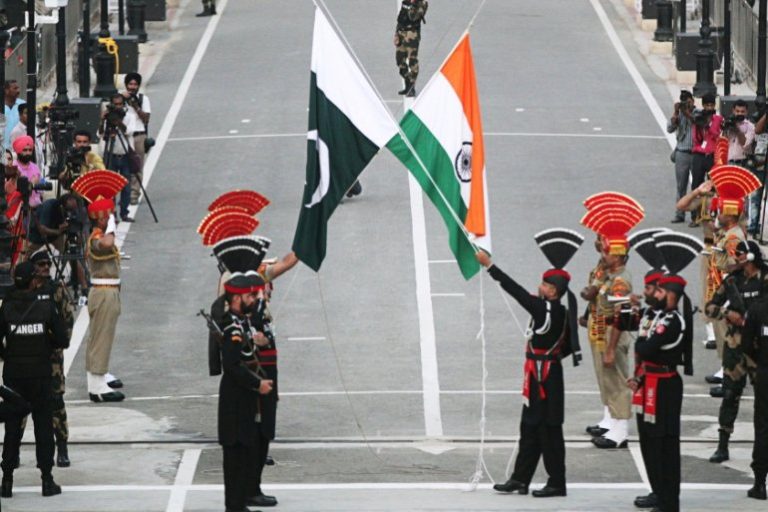British Overseas Territories
British Overseas Territories are a set of territories that are under the sovereignty of the United Kingdom but aren’t considered a part of it. These territories are spread across various regions, including the Caribbean, Atlantic, Indian and Pacific Oceans. Here’s a bit more detail about them, as I reckon you’d appreciate the in-depth look.
अनुक्रमणिका
1. Self-Governance and Relationship with the UK:
Most of these territories are self-governing, but the UK is responsible for their defense and international affairs. The British government also retains the power to legislate for the territories, although this power is rarely exercised. The Queen is the head of state, and a Governor represents her in each territory.
2. The Territories Themselves:
As of my last update in September 2021, there are 14 British Overseas Territories. These include Gibraltar, Bermuda, the Falkland Islands, the Cayman Islands, the British Virgin Islands, and others. Each has its unique characteristics, government, and local laws.
3. Residents and Citizenship:
People born in these territories have British citizenship. They carry British passports and have the right to reside in the UK. However, they may have different voting rights in the UK, and some territories may have specific local immigration controls.
4. Economic Overview:
The economies of these territories can vary widely. Some, like the Cayman Islands and Bermuda, are famous for their financial services, often criticized for being tax havens. Others, such as the Falkland Islands, rely more on industries like fishing and tourism.
5. Controversies and Challenges:
British Overseas Territories have faced various issues, ranging from sovereignty disputes (like the Falkland Islands with Argentina) to scrutiny over financial regulations. The UK’s Brexit has also created uncertainties, especially for territories like Gibraltar.
6. Environmental Stewardship: Many territories are home to unique ecosystems, and they include a significant percentage of the UK’s biodiversity. Some territories like Pitcairn Islands are committed to large marine reserves to protect their unique ocean life.
Remnants of Colonialism
While it’s fascinating to explore the diversity and uniqueness of these territories, they do open a debate about the remnants of colonialism and how the UK’s relationship with these territories should evolve in the 21st century.
14 Territories
- Bermuda: Located in the North Atlantic, Bermuda is famous for its beaches and as a financial hub. It’s the oldest and most populous of the British Overseas Territories.
- Cayman Islands: Situated in the Caribbean, the Cayman Islands are renowned for their banking sector. Tourism also plays a significant role in the local economy.
- Falkland Islands: Located in the South Atlantic, the Falklands are known for sheep farming and their rich marine life. The sovereignty dispute with Argentina is a significant issue here.
- Gibraltar: This territory, located at the southern tip of the Iberian Peninsula, is a strategic military and naval location. It’s known for the Rock of Gibraltar and has a mixed cultural heritage.
- Montserrat: This Caribbean island has struggled with volcanic activity, notably in the 1990s. It’s known for its lush landscapes and rich Irish and African heritage.
- Pitcairn Islands: Located in the Pacific, the Pitcairn Islands are inhabited by descendants of the HMS Bounty mutineers. It’s one of the least populated territories.
- Saint Helena, Ascension, and Tristan da Cunha: These islands in the South Atlantic are known for their remoteness. Saint Helena was Napoleon’s place of exile.
- Turks and Caicos Islands: Situated in the Caribbean, these islands are famous for their beautiful beaches and coral reefs. Tourism and offshore finance are vital to the economy.
- British Virgin Islands: Also in the Caribbean, these islands are a major player in the offshore financial services industry. They offer stunning landscapes and marine environments.
- Anguilla: Another Caribbean territory, Anguilla is known for its relaxed atmosphere and has become a popular destination for luxury tourism.
- South Georgia and the South Sandwich Islands: Located in the South Atlantic, these islands are remote and largely uninhabited. They are known for their wildlife, including penguins and seals.
- British Antarctic Territory: This region in Antarctica is claimed by the UK but under the Antarctic Treaty system. It’s dedicated to scientific research.
- British Indian Ocean Territory: Comprising the island of Diego Garcia, it’s used as a significant U.S. military base. The forced removal of the native Chagossians is a contentious issue here.
- Akrotiri and Dhekelia: These are two military bases on the island of Cyprus. They remain under British control following Cyprus’s independence and are used by the British Armed Forces.
These territories reflect a wide range of cultural, economic, and environmental diversity.
BIOT – Diego Garcia
1. Diego Garcia: The largest and most well-known island in the territory, Diego Garcia, hosts a significant U.S. military base. It’s the only island in BIOT where people currently reside, and it’s primarily military personnel and contractors.
2. Other Islands: The smaller islands and atolls are uninhabited, and some are quite stunning with rich marine biodiversity. They include the Peros Banhos Atoll, the Salomon Islands, and the Great Chagos Bank.
3. Environmental Protection: Some areas are designated as a marine protected area, and the region is home to some unique marine species, including corals, turtles, and various fish.
4. Controversial History: The native Chagossians were forcibly removed from these islands in the 1960s and 1970s to make way for the military base, leading to ongoing legal disputes and international controversy.
Chagos Archipelago
The Chagos Archipelago is a group of seven atolls comprising more than 60 individual tropical islands in the Indian Ocean, about 500 kilometres south of the Maldives. Here’s an overview that I think you’ll find interesting:
1. Location and Geography: The archipelago is situated in a remote location, and its islands are renowned for their stunning natural beauty. The Great Chagos Bank is the world’s largest coral atoll structure, and the entire region is rich in marine biodiversity.
2. History and Colonisation: The islands were uninhabited until the French colonisation in the 18th century. Slaves were brought to the islands to work on coconut plantations. The United Kingdom took control of the archipelago in 1814, and it eventually became part of the British Indian Ocean Territory (BIOT).
3. The Chagossians: As previously mentioned, the Chagossians developed a unique Creole culture on the islands. Their forced removal by the British government in the 1960s and 1970s is a significant and controversial part of the archipelago’s history.
4. Diego Garcia: The largest island, Diego Garcia, hosts a U.S. military base. Its strategic location has made it an essential component of American military operations in the region.
5. Environmental Importance: The archipelago’s isolation has allowed it to support an incredible range of wildlife, including various species of coral, fish, and seabirds. Some parts have been designated as marine protected areas.
6. Sovereignty Dispute: Mauritius has claimed sovereignty over the Chagos Archipelago, and this claim has received international support. The International Court of Justice (ICJ) has ruled that the UK’s administration of the territory is unlawful.
7. Tourism and Access: Tourism is virtually non-existent in the archipelago, and access is restricted, particularly to Diego Garcia due to its military function. The surrounding waters are sometimes visited by yachts, but permission must be obtained.
The Chagos Archipelago’s history is as rich and complex as its natural environment. The intertwining issues of environmental protection, human rights, geopolitics, and international law make it a compelling subject, both in academic circles and international relations.
The Chagossians
The Chagossians, also known as the Ilois, are the native people of the Chagos Archipelago, part of the British Indian Ocean Territory (BIOT).
1. Origins and Culture: The Chagossians are descendants of African slaves, Indian and Malay indentured labourers, and other groups who settled on the islands during the 18th and 19th centuries. They developed a distinct Creole culture, with influences from African, Indian, and European traditions.
2. Forced Removal: In the 1960s and 1970s, the Chagossians were forcibly removed from their homes by the British government to make way for a U.S. military base on Diego Garcia. This removal was done without proper compensation or regard for their welfare, leading to significant hardship for many.
3. Life After Removal: Most Chagossians were relocated to Mauritius and the Seychelles, where they often faced poverty and discrimination. Many struggled to adapt to new environments that were vastly different from the islands they had called home.
4. Legal and Political Struggles: The Chagossians have been fighting1DW article for their right to return to the islands and for proper compensation since their removal. There have been numerous legal battles, both in British courts and internationally. In some cases, the courts have ruled in favor of the Chagossians, but the British government has also appealed or ignored some of these rulings.
5. International Attention: The plight of the Chagossians has attracted international attention and support from various human rights organizations. In 2019, the International Court of Justice (ICJ) advised that the UK should end its administration of the Chagos Archipelago, and the United Nations General Assembly voted in favor of this advisory opinion.
Related articles
![]()


2 Comments
Comments are closed.